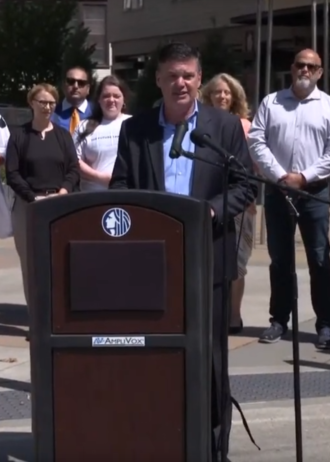The new and improved 15th Avenue NE bike lanes opened last month, and much of the project is excellent. But the opening celebrations have been a bit dampened due to the city’s decision to ignore people’s requests to help them cross the biggest barrier to biking on this route: Lake City Way.
I have been a bit slow to write about this project because the city has put safe streets advocates in a bit of an awkward bind here. On one hand, they did build nearly one mile of new protected bike lanes. As important as it is to watchdog transportation projects, it is also important to celebrate wins. This is a mile of bike lane that is now part of our city, and that’s great. People will be able to travel by bike more comfortably and, hopefully, more safely. The bike lanes also significantly reduced the crossing distance for people walking across this street, which is far too wide for the relatively low amount of car traffic it carries. Bike lanes are not just about biking, they are part of a complete street that is safer for all users.
It is worth celebrating every time the city makes our streets significantly safer than they were before, and most of this project does so. I feel like I need stress that there’s a full stop after this sentence, even though I know you can sense the word “but” coming soon. This street is safer, and if this project works as well as we all hope then as many as 10 people will be spared from serious traffic injuries or death every year from now on. That’s a huge and very real improvement.
But (there’s that word) the project has some major shortcomings that undercut the effectiveness of the rest of the improvements, and it’s difficult to want to heap too much praise on the city because of them. However, the problems happened during the previous administration, and I hope that SDOT and Mayor Bruce Harrell can learn from these issues and avoid them in the future.
The highest-level takeaway is that SDOT and the mayor need to listen to advocates, who were genuinely engaged in this project’s design process. Mayor Jenny Durkan chose to completely shut out and ignore community members who volunteered their time and energy to engage with this project and suggest improvements. This was a major problem with Mayor Durkan’s leadership in general, and it’s consequences show up once again in the way this project turned out.
Project shortcomings

The biggest and most obvious problem with the street’s design is that all safety improvements end one block before reaching Lake City Way, one of the most dangerous streets in Seattle. The paving project continues all the way to the busy street, but the bike lanes and their related street safety benefits end at NE 80th Street. As the new roadway approaches Lake City Way, it balloons out from two general traffic lanes to four despite the fact that traffic volumes actually drop from 10,000 vehicles per day to 8,000 according to the city’s 2020 Traffic Report (based on pre-pandemic 2019 data). Even 10,000 vehicles per day is not much at all for an arterial street, and 8,000 will easily fit in two lanes. As the new lanes are added, all safety elements disappear. It is an enormous missed opportunity to keep people safe.
But to make matters worse, people made it very clear to the project team during the design phase that this was not good enough. Two years ago, when there was definitely enough time to make changes, I summarized what I had been hearing: (more…)













